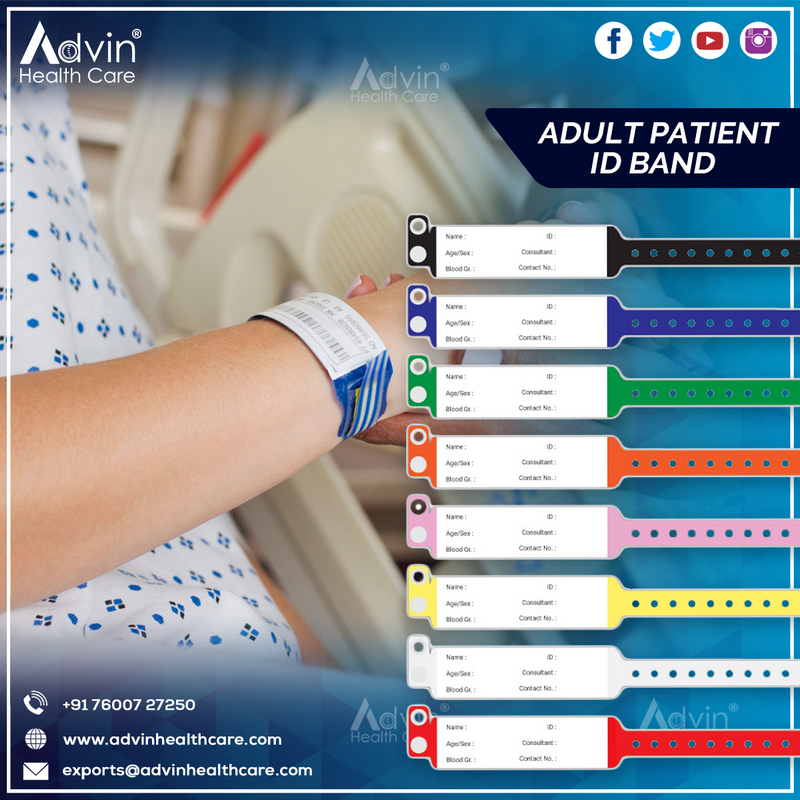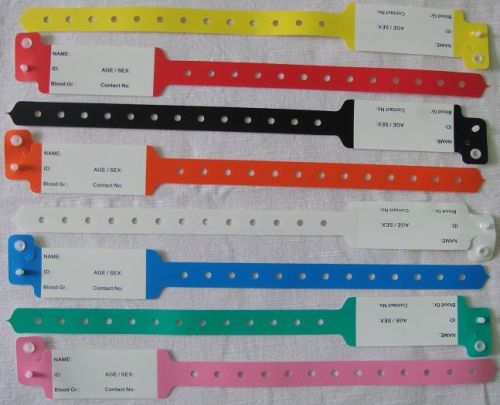The Purpose of Patient Identification Band in Optimizing Hospital Operations
The Purpose of Patient Identification Band in Optimizing Hospital Operations
Blog Article
Discovering the Different Kinds Of Patient Identification Band Used in Medical Facilities
In the detailed globe of health care, the essential role of Patient Identification bands often goes undetected. These bands, varying from simple paper wristbands to innovative RFID bands, develop the backbone of Patient security protocols, making sure precision in Patient Identification. The huge variety of these bands, each with its special benefits and restrictions, is frequently forgotten. As we navigate through this topic, one might gain understanding into the refined complexities and important significance of such bands in clinical facilities.
Understanding the Value of Patient Identification Bands
While they might appear like simple devices, Patient Identification bands play a crucial function in medical facilities. These bands offer as a critical device for validating Patient identity, avoiding medical mistakes associated to misidentification. Patient Identification bands additionally help in improving administrative jobs, making certain precise record-keeping and invoicing.
Standard Paper Wristbands: Their Use and Limitations
Standard paper wristbands have been a staple in Patient Identification across numerous clinical facilities. While their use prevails, they harbor particular constraints that may influence their efficiency in Patient monitoring. This section will concentrate on the range of their application and the inherent downsides connected with their usage.
Paper Wristbands: Usage Extent
In the world of Patient Identification, paper wristbands have long held a critical function. These bands are typically made use of in outpatient settings, where the Patient's remain is short-term. The wristbands have necessary information such as the Patient's name, date of birth, and a special Identification number. This basic, yet effective system, enables doctor to quickly and precisely identify individuals, ensuring the right therapy is administered. Paper wristbands are additionally used in emergency situation scenarios, where fast Identification is paramount. Their use reaches occasions like blood contribution drives and mass inoculation programs, additionally emphasizing their convenience. In spite of innovations in technology, the simple paper wristband continues to be a cost-effective and reputable remedy for Patient Identification in different health care circumstances.
Limitations of Paper Wristbands
Regardless of their prevalent usage, paper wristbands are not without their downsides. Their physical toughness is just one of the substantial constraints. Exposure to water, sweat, or misuse can make them unreadable or perhaps trigger them to break down. Furthermore, paper wristbands frequently do not have the technical capacities of more modern-day alternatives, such as barcoding or RFID chips, limiting their functionality to just showing created info. The failure to update or modify the information on the wristband is one more imperfection. If the details is transcribed, clarity can be jeopardized, leading to prospective misidentification. Paper wristbands can create discomfort or skin inflammation to some individuals, specifically when put on for extensive durations.
Barcoded Wristbands: Developments in Patient Identification
While Patient Identification has actually long been an important facet of health care, the development of barcoded wristbands signifies a substantial jump onward. These bands leverage the simplicity of barcoding innovation, allowing for Patient info to be quickly checked and accessed. They boost the speed and precision of Patient Identification, minimizing the threat of clinical mistakes associated to misidentification.
Radio Frequency Identification (RFID) Bands: a Step Towards Futuristic Medical Care
The development of Patient Identification bands has actually produced the emergence of Superhigh frequency Identification (RFID) Bands (patient identification band). These ingenious gadgets existing key benefits for health care facilities, using a much more reliable and technologically advanced ways of Patient Identification. The application of RFID in healthcare is a significant step towards a much more advanced approach to Patient administration and security
Comprehending RFID Bands

RFID Bands: Trick Advantages
Primarily, these bands boost Patient safety by providing exact, immediate Identification, consequently lowering clinical errors. RFID bands can store a vast quantity of Patient information, consisting of clinical history and allergic reactions, allowing individualized care. On the whole, RFID bands represent a substantial development in Patient Identification innovation, profiting both patients and health care service providers.
Applying RFID in Health Care
As we enter a technologically sophisticated period, the implementation of RFID bands in health care comes to be increasingly crucial. These bands give a seamless method to track and recognize patients, ensuring their safety and boosting effectiveness in therapy procedures. RFID bands supply numerous benefits over standard Identification techniques. They can keep a huge amount of data, including the Patient's case history and therapy strategies, which can be quickly accessed by health care carriers. This information assists physicians make notified choices concerning the Patient's therapy plan. Furthermore, RFID bands decrease clinical errors by giving precise Patient Identification, which is important in preventing misdiagnosis or incorrect medication management. Hence, the application of RFID bands is a significant step in the direction of improving Patient security and health care distribution.

Color-Coded Wristbands: Helping in Quick and Accurate Diagnosis
In the dynamic setting of a clinical center, color-coded wristbands have actually become important tools helpful site for swift and precise Identification of an individual's clinical condition. These wristbands, worn by patients, lug certain colors that represent different clinical conditions or statuses. For instance, red might indicate allergic reaction dangers, while yellow may represent a fall threat. This system is developed to offer instant visual hints to doctor, boosting Patient security and care top quality. In emergency scenarios, making use of these wristbands enables rapid decision-making. Nevertheless, the effectiveness of color-coded wristbands depends upon the harmony of color interpretation throughout medical care More Info organizations, calling for usual standards for constant application.
Methods for Effective Implementation and Monitoring of Patient ID Bands
Attaining ideal use of Patient Identification bands demands a well-structured approach for their application and administration. Patient education is also crucial; individuals should understand the function of the bands and the need for their consistent wear. It's vital to have a back-up plan in area, such as barcode scanning or biometrics, to make certain that Patient Identification is never endangered.
Final thought
Patient Identification bands are critical in clinical facilities to make certain security and precision. Conventional paper, barcoded, RFID, and color-coded wristbands each hold one-of-a-kind Get More Information benefits, varying from cost-effectiveness to advanced data storage space and instant medical informs. Efficient application and administration of these bands can significantly decrease medical errors, improve performance, and improve overall Patient care. Thus, understanding and utilizing these Identification devices is critical for maintaining high standards in healthcare.
These bands, varying from easy paper wristbands to advanced RFID bands, form the foundation of Patient safety protocols, ensuring accuracy in Patient Identification.The development of Patient Identification bands has brought about the emergence of Radio Regularity Identification (RFID) Bands. Overall, RFID bands stand for a substantial advancement in Patient Identification innovation, benefiting both individuals and health care carriers.
RFID bands lower clinical mistakes by giving accurate Patient Identification, which is crucial in protecting against misdiagnosis or wrong medicine administration. Patient education and learning is likewise crucial; clients must understand the objective of the bands and the requirement for their constant wear.
Report this page